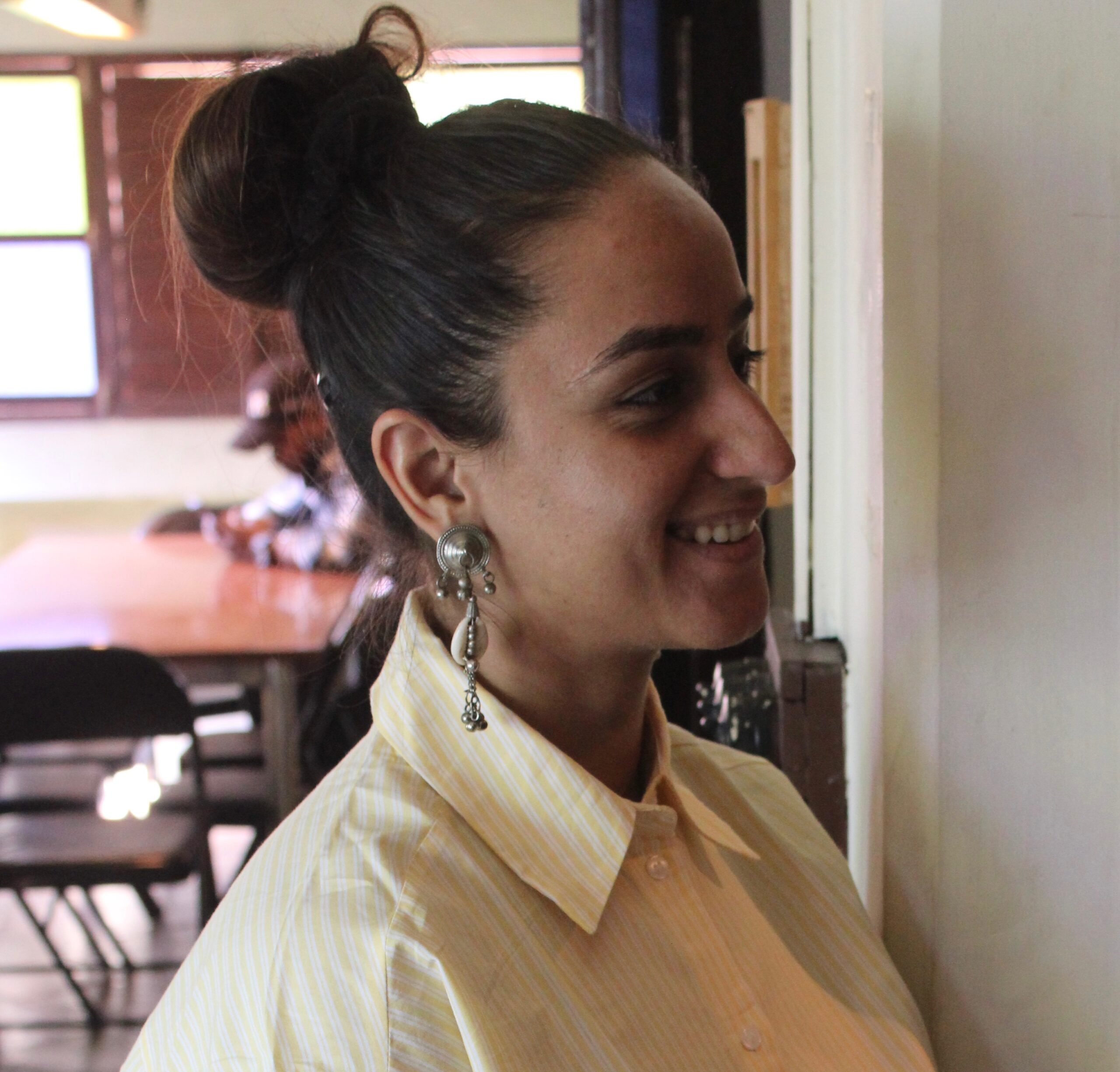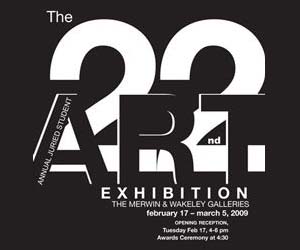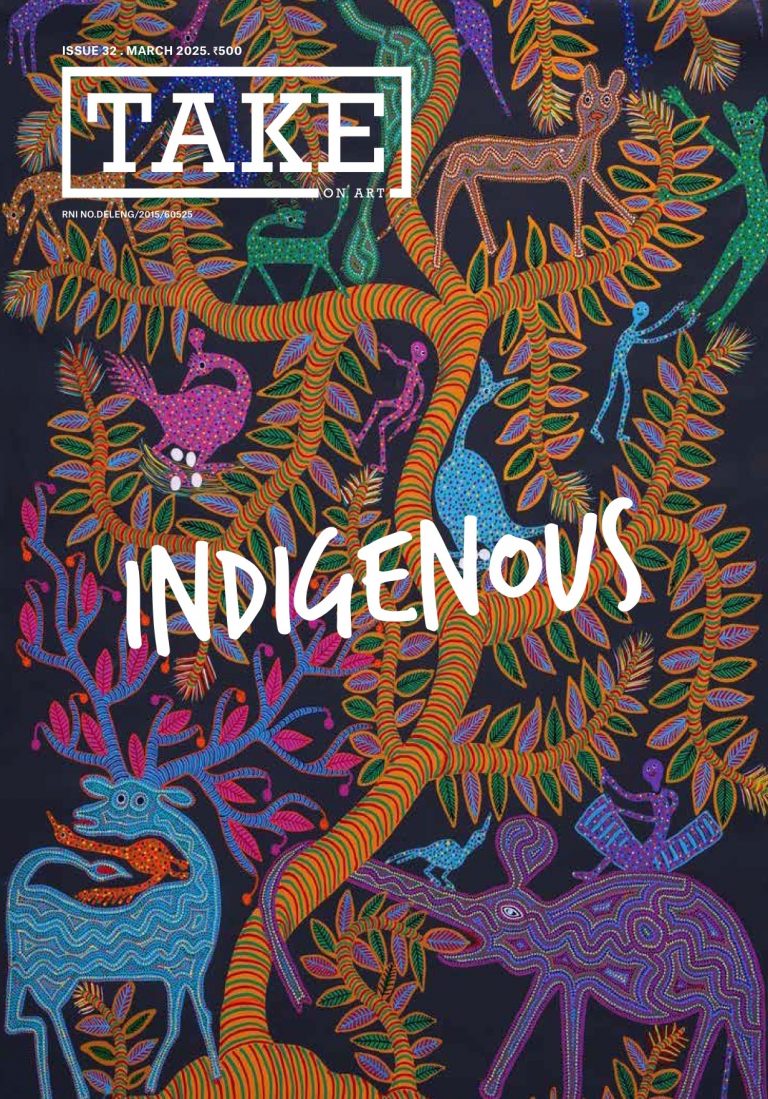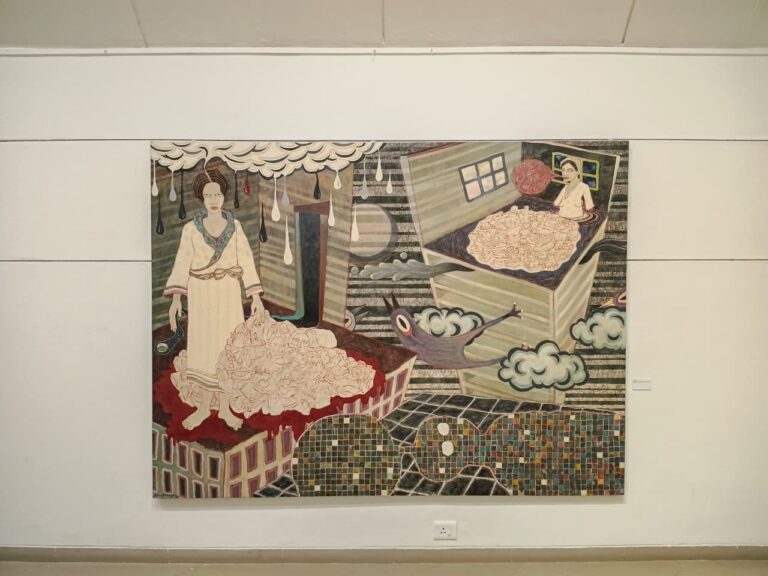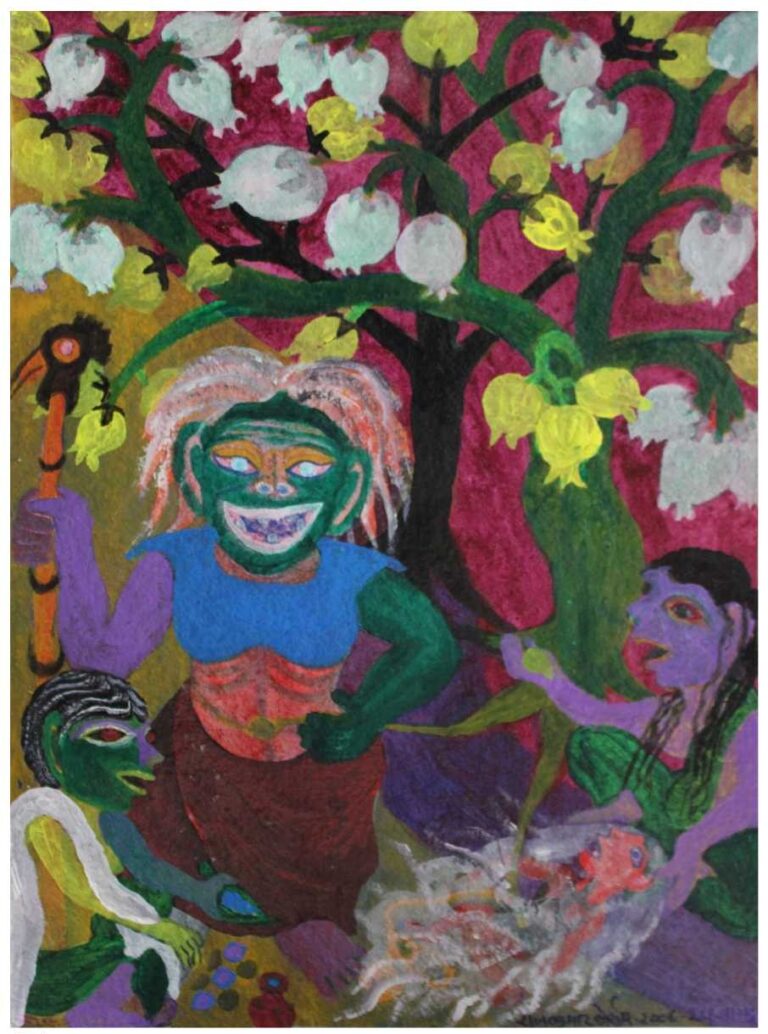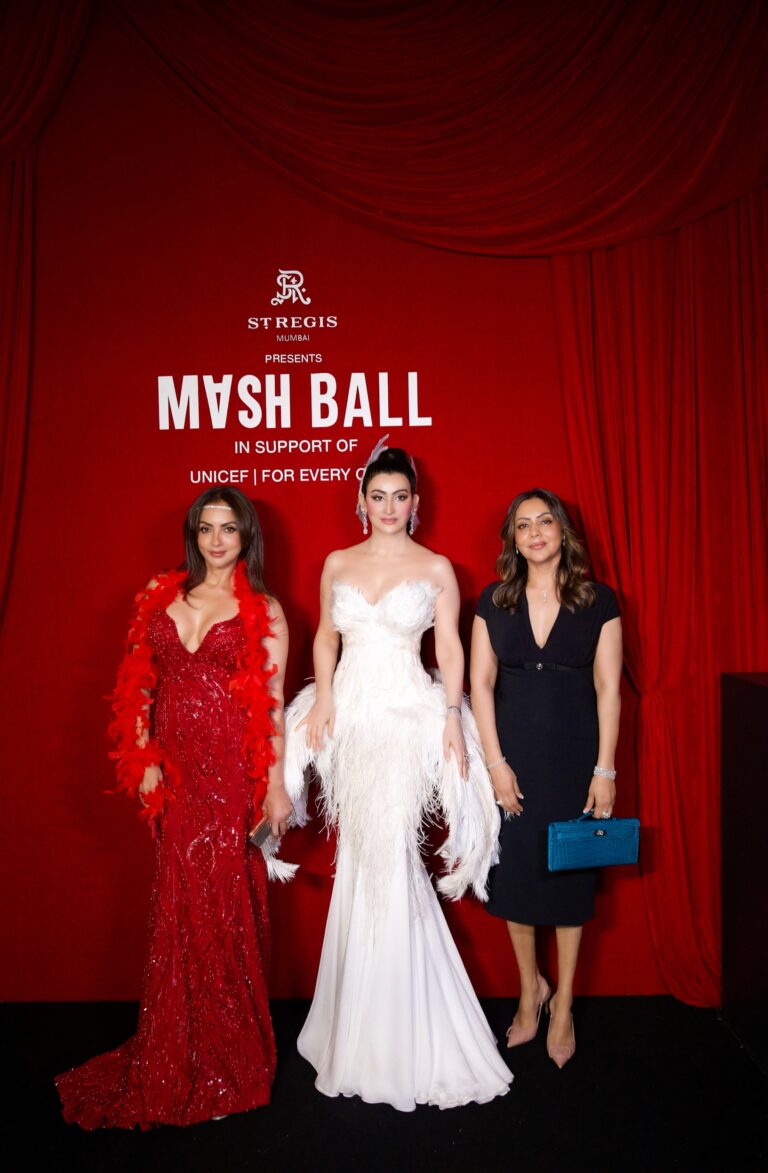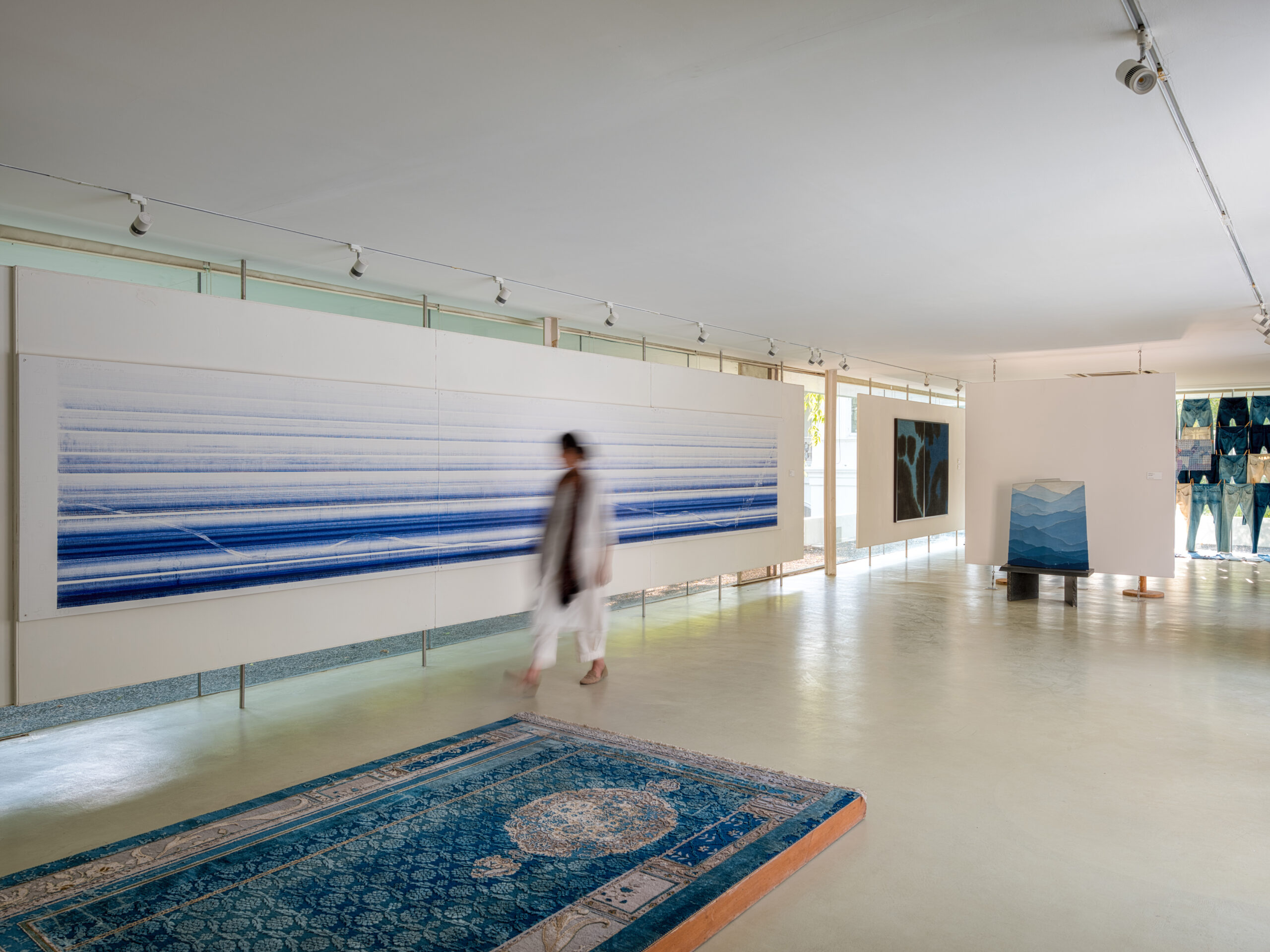 Indigo Art Museum, Copyright: Indigo Art Museum
Indigo Art Museum, Copyright: Indigo Art Museum
Dilpreet Bhullar (DB): What part of your journey inspired you to curate Ahmedabad Cultural Week?
Shristi Sainani (SS): When we got to the city of Ahmedabad, we realised that the conversations around art happened in concentrated circles, and each art space we identified (some of which have been functioning successfully for 70+ years) had been consistently showcasing splendid formations independently. Not to mention, the city of Ahmedabad has always been known to have a rich history, cultural heritage with iconic landmarks like Adalaj Stepwell, Jama Masjid, the Calico Museum of Textiles as well as preserves an exquisite archive of handicrafts and culinary traditions. It has a lineage of patronage with important families that form the cultural foundation and has witnessed tracks of brilliant artistic practices. Over the last couple years, we had observed a surprising surge in Contemporary Art spaces that are dynamic with their programming and outreach. Hence, recognising the growing potential to execute a larger, more comprehensive occurrence that may activate all spaces, simultaneously leading to the initiation of Ahmedabad Cultural Week. Consequently, with an aim to invite an audience of diverse calibres targeting cultural hosts, enthusiasts, critics and patrons we worked towards Ahmedabad Cultural Week Edition 1 (ACW Ed.1), for the people of Ahmedabad to look forward to interacting with and learning about Contemporary Art and artistic practices.
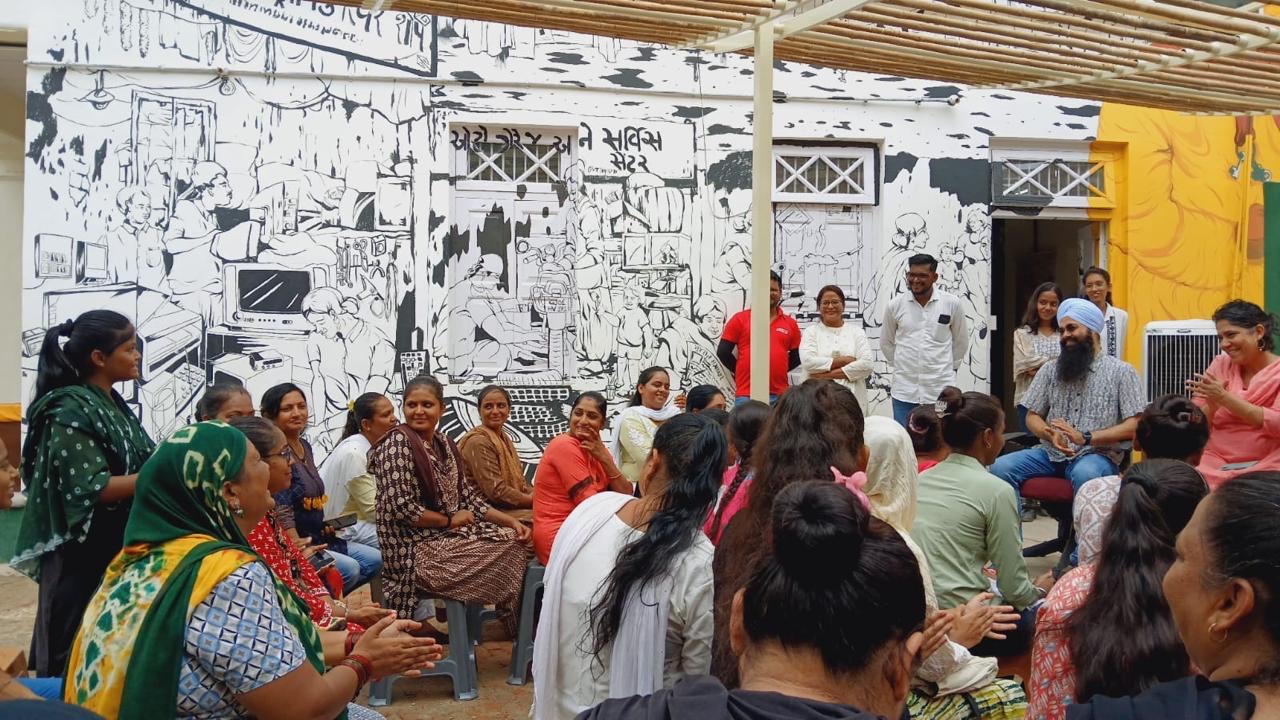 Basera, Copyright: Ahmedabad Cultural Week 2025.
Basera, Copyright: Ahmedabad Cultural Week 2025.
DB: Can you tell us more about a defining moment in your career that shaped your perspective as a curator?
SS: I believe a lot of my curatorial strategies that have found their way into the world, have been shaped by the same inclinations that drove my academic research. I have a deep interest in dismantling and assessing core concepts of exhibition making, with a focus on collections and architecture of private art museums in addition to looking closely at the art of Africa and Asia. I was honoured when my paper on inclusivity in the realm of museum spaces granted my examination the INSC Researchers Award in 2021. If I take a minute to assess my practice, I believe there are some terms that constantly recur : inquiry, collectiveness, contemporaneity, impact and alter. Much of my curatorial vision tends to probe the current, rather urgent matters of society with an aim to bring multitudes together – this could be in terms of the artistic voices, materiality or temperament of design. Then through the sincere act of piecing fragments together, there is an attempt to form a cohesive narrative that gently nudges a viewer towards either, recognising impact or a consideration to alter existing systems that steer away from being humane.
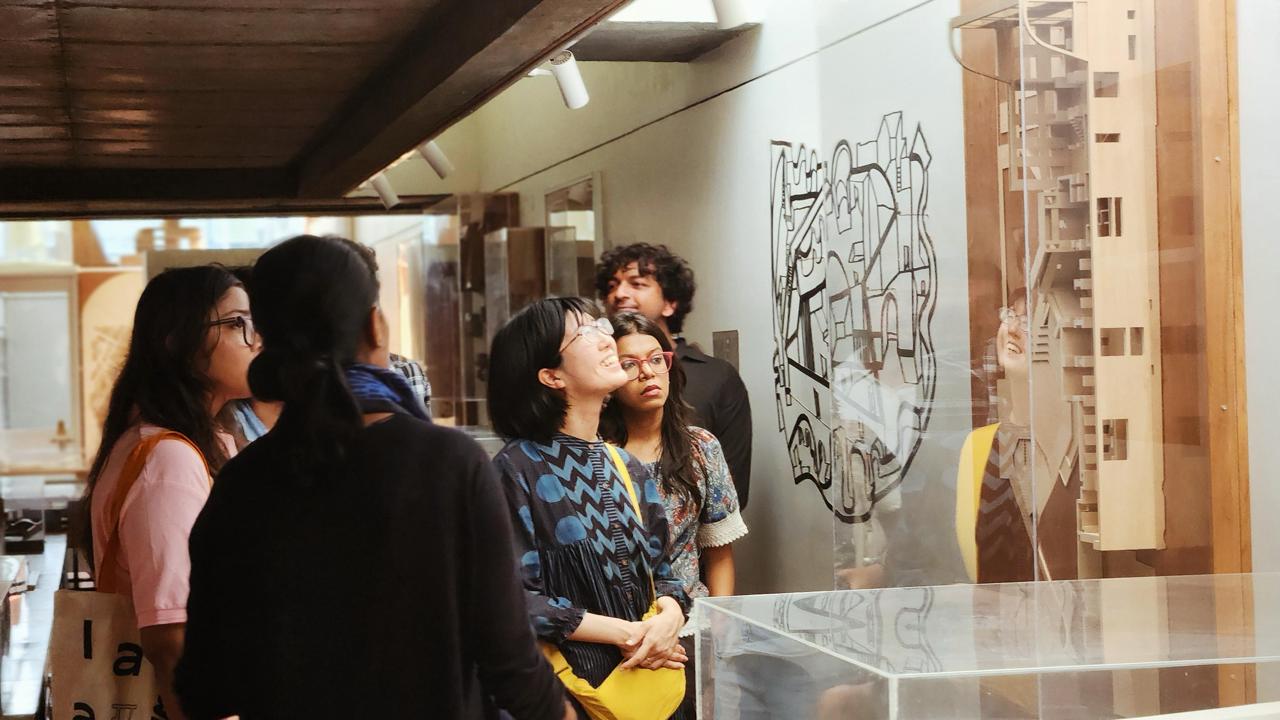 B.V. Doshi Archives, Copyright: Vastu. Shilpa Foundation.
B.V. Doshi Archives, Copyright: Vastu. Shilpa Foundation.
DB: What was the core idea or theme behind this year’s edition of Ahmedabad Cultural Week 2025?
SS: The two terms Ahmedabad Cultural Week’s inaugural edition holds close are ‘contemporaneity’ and ‘community building’. The city of Ahmedabad has always been known to have a rich history, cultural heritage with iconic landmarks as well as reserves of exquisite handicrafts and culinary traditions. There has been a lineage of patronage with important families that form the cultural foundation of the city. Along with their existing institutions which were functioning independently since establishment, we also noticed a recent surge in the number of Contemporary Art spaces that are dynamic with their programming and outreach. Hence, recognising the growing potential to execute a larger, more comprehensive occurrence that may activate all spaces, simultaneously leading to the initiation of Ahmedabad Cultural Week Edition 1 (ACW Ed.1). We wanted to be inclusive and diverse, as we balanced the genres of art spaces some that showcased traditional realms of art, had commercial considerations, and a few which unveiled socially charged issues.
 Conflictorium, Copyright: Ahmedabad Cultural Week 2025.
Conflictorium, Copyright: Ahmedabad Cultural Week 2025.
DB: How do you balance between a showcase of traditional heritage with promotion of contemporary and experimental art forms?
SS: Through the curation of the first edition of Ahmedabad Cultural Week we were mindful while selecting the genres of art spaces. We ensured that some showcased traditional realms of art, the others had commercial considerations, and additionally there were few that unveiled socially charged issues. The stories that were reflected through the course of Ahmedabad Cultural Week had to make an attempt to trace an honest image of the cultural fabric of the city. This, while also acknowledging our limitations as its our first step towards this manifestation. As part of the 15 selected for activation, we had organisations such as 079 | STORIES and Iram Art which spear head Contemporary Art in the city. There is also then Archer Art which is known to exhibit a fine selection of original works by modern masters, and Samara Art that looks at the work of emerging artists. Arthshila, on the other hand has a very different format, its an immersive platform with a multi-dimensional focus on architecture, cinema, design, literature, performing arts and visual arts. ACW Ed.1 also has as part Darpana Academy of Performing Arts, Hutheesing Visual Arts Centre, Kanoria Centre for Arts, Kasturbhai Lalbhai Museum, Lalbhai Dalpatbhai Museum, Shreyas and Vastu-Shilpa Foundation, all of which have been age old establishments that have set the foundation of the city’s cultural scape. It is then equivalently crucial for spaces such as Basera, Conflictorium and Mehnat Manzil to be part of an activation like Ahmedabad Cultural Week, in order to ensure that an urban scape like Ahmedabad is duly represented. Their involvement equates to an inclusivity of voices and contemporary issues that often go unnoticed in formal art spaces. Through these institutions, there is means to put them forward without unnecessary refinement. Therefore, there is a whole range genres that have been showcased — from non-profits to institutions of performance and pedagogy, to dense archives of history and tradition.
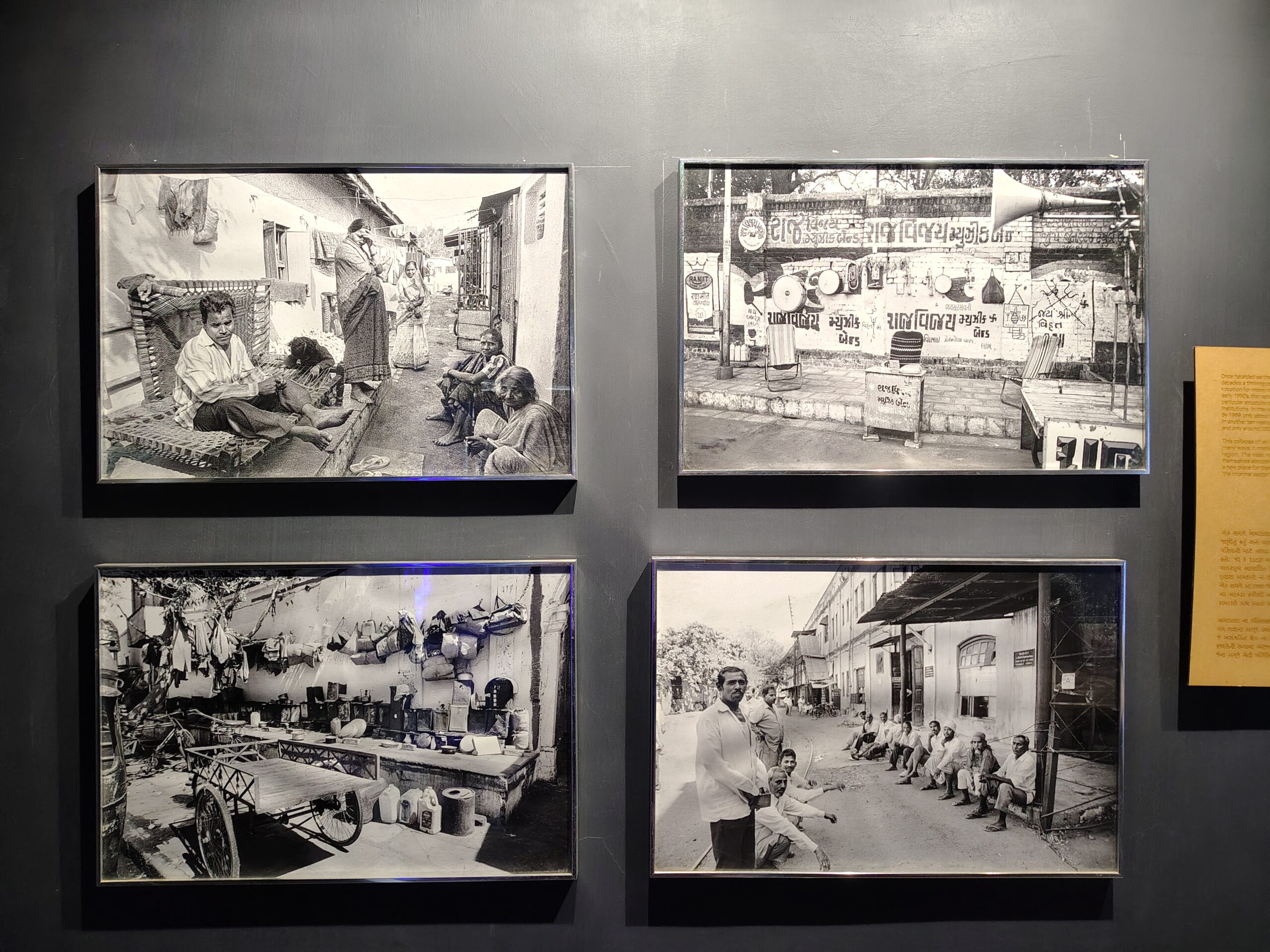 Mehnat Manzil, Copyright: Ahmedabad Cultural Week 2025.
Mehnat Manzil, Copyright: Ahmedabad Cultural Week 2025.
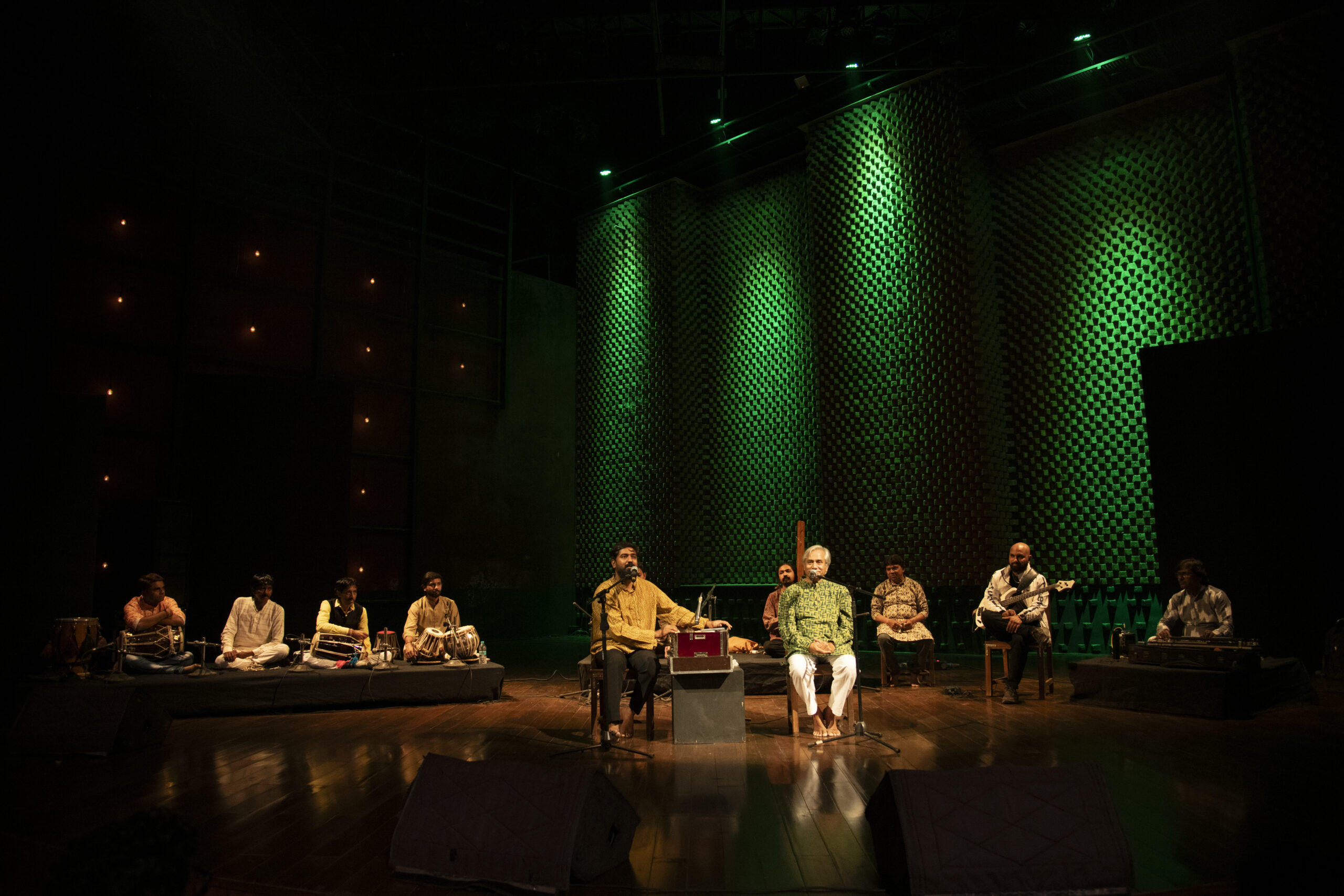 Hardik Dave, Darpana, Copyright: Ahmedabad Cultural Week 2025.
Hardik Dave, Darpana, Copyright: Ahmedabad Cultural Week 2025.
DB: What are some of the biggest challenges you face while organising such a large-scale cultural event in Ahmedabad?
SS: We were fortunate to have immense support, the organisations involved, our external partners and sponsors who came on board, all were quite excited and encouraging of the initiative since it was the very first time 15 leading venues would all come alive together, inviting the world to experience the city’s cultural sphere in this capacity. I suppose if there have to be challenges that must be outlined, it would be that of sustenance. We hope that this initiative that we have put forward with immense care for the city, receives the same if not more, love and support that it has in the first edition. Additionally, that of expansion. While striving for the same refined quality that the inaugural edition has set a bench mark for, we aim to continually invite terrific minds and practices to the city of Ahmedabad, to ensure the city and its people have a diverse palette to look forward to every year, ensuring that there is ‘contemporary’ conversation, pedagogy and interaction within and around the sphere of the arts.
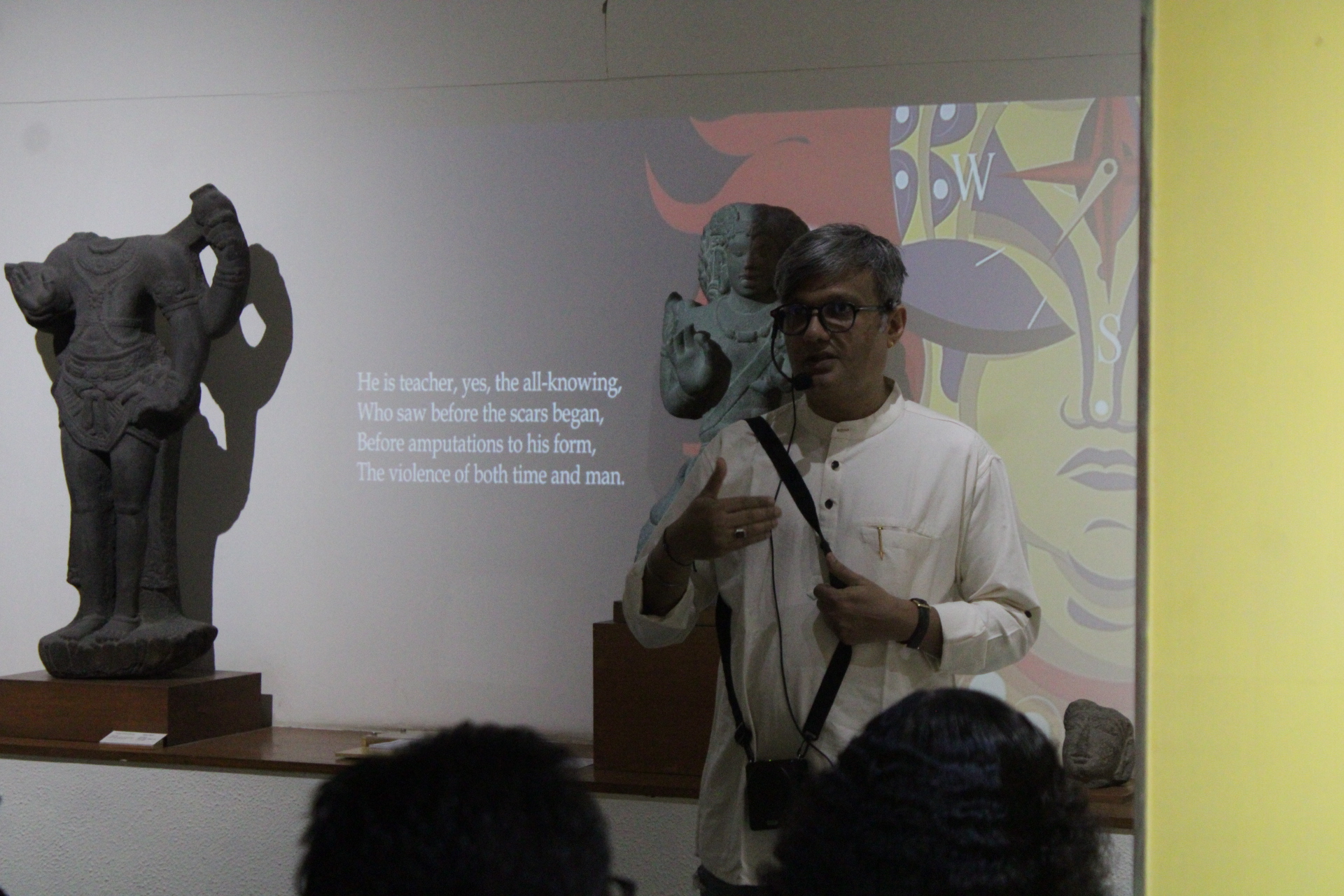 L.D. Museum, Copyright: Ahmedabad Cultural Week 2025.
L.D. Museum, Copyright: Ahmedabad Cultural Week 2025.
DB: What are your long-term aspirations for Ahmedabad Cultural Week? Are there new formats or expansions you are exploring?
SS: We steer clear of certain terminology and don’t identify as a ‘festival’, rather look at Ahmedabad Cultural Week as an activation and us as facilitators; the existing infrastructure, be it the city’s architecture, its design schools or livened heritage forms the base of any curation that is induced into the urban scape. For instance, in the editions to come it would be a dream to invite Contemporary Art into a heritage site such as that of Rani ni Vav, or perhaps have one of the reputed design schools bring to this city, an exhibition of say the work of Louis Kahn or Alexander Calder who already have history with the city of Ahmedabad.









